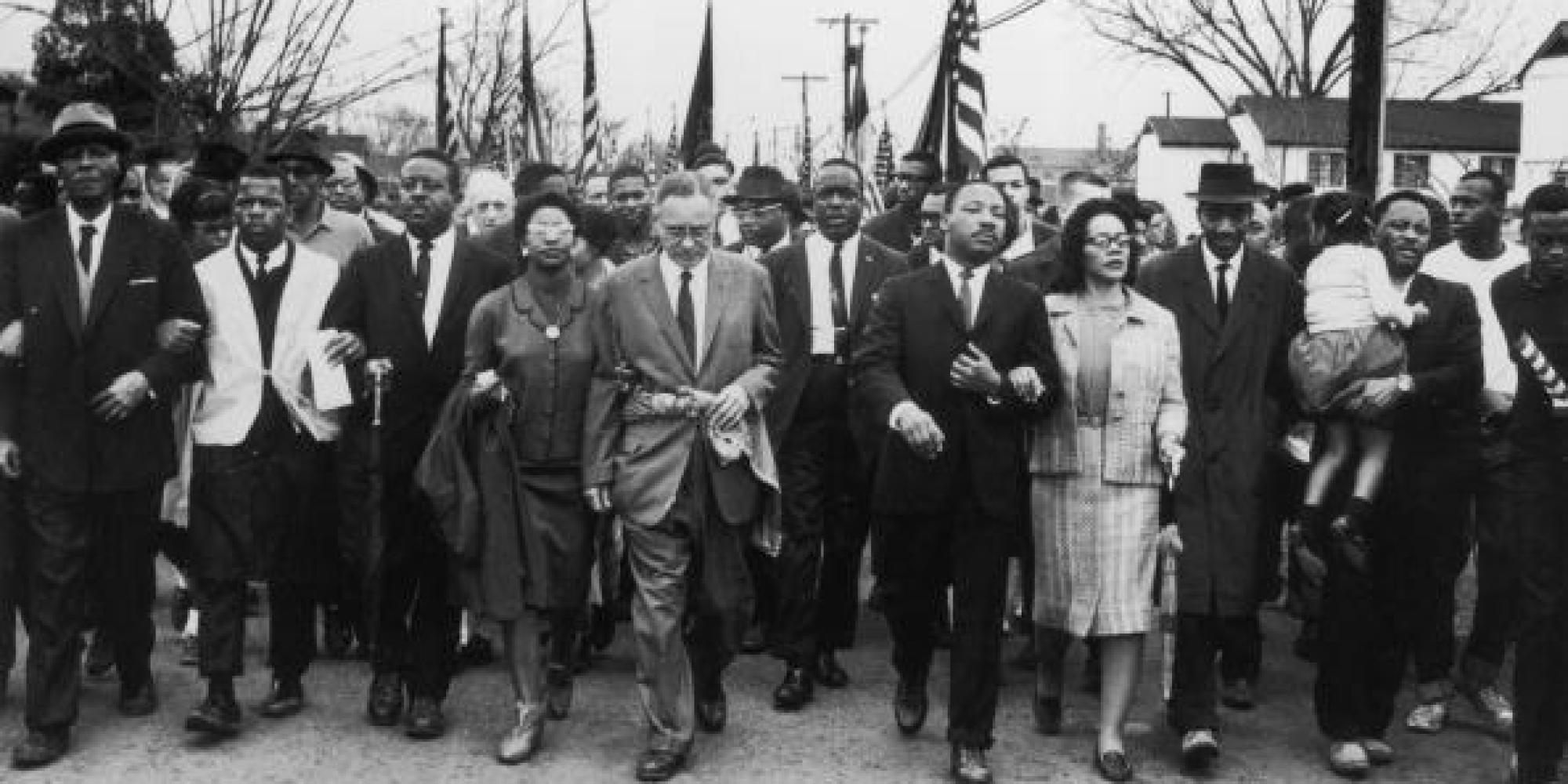If you haven’t seen the movie Selma then it’s time you did! For those too young to remember, Selma was the 1965 march from Selma, Alabama to the state capital in Montgomery. The peaceful 54-mile march was undertaken by Dr. Martin Luther King Jr. and his supporters to emphasize the fact that although African Americans had the legal right to vote they were finding it impossible to register due to indiscriminate decisions made at the state level — especially in the good old south where good old boys like George Wallace were in charge.
Dr. King was not part of the initial march on Sunday, March 7 that met with unprecedented violence when 600 African-American activists were attacked by state troopers and locals as they left Selma. The human destruction and devastation, televised live to over 7 million people with pictures of the brutality published worldwide, became known as Bloody Sunday.
The marchers set out again on March 9 with Dr. King. By this time the peaceful protesters had been joined by black and white supporters from around America and from every denomination. The peaceful protesters once again reached the Edmund Pettus Bridge but this time the troopers stood down. However, instead of continuing the march, Dr. King turned and led the supporters back to Selma. Dr. King feared that the group would be compromised if state troopers closed ranks behind them cutting off access to supplies and help.
Dr. King sought protection from a federal court and once that was granted the third, and final, march officially began on March 21. 2,000 soldiers, 1,900 National Guards from Alabama, FBI agents and Federal Marshals were on hand to protect the growing throng of peaceful protesters. On March 25, 1965 25,000 people marched to the State Capitol Building in Montgomery in support of voting rights for African Americans.
The incredibly cruel and unwarranted violence portrayed in the film was very disturbing and difficult to watch. But, it was real for all of the activists who lived and died fighting for this basic human right. As I sat watching the credits it struck me that the Civil Rights Movement, a series of political movements for equality before the law, is the 1960s equivalent of the gendered violence movement of today.
Worldwide women have been peacefully protesting for the right to an education, the right to drive, the right to choose their life partner, the right to reproductive choices, the right to vote, the right to hold political office, as well as the right to live a life free from fear and violence. Yet, often these peaceful protests are marred by violence initiated by men who believe they have an innate right to power and control over those considered inferior.
In Canada, our Aboriginal sisters have been peacefully demonstrating and asking the federal government for an enquiry into the missing and murdered Indigenous women. The federal government consistently refuses their request.
Instead, we continue to read about cases like the RCMP officer in northern Manitoba who arrested an intoxicated indigenous woman at a house party only to return, off duty, to request her release into his custody so that he could, “pursue a personal relationship.”
Or the Portage la Prairie, Man., RCMP constable who took a complaint from a woman who was choked, beaten, stripped, and pushed out of a house naked by her boyfriend. The constable failed to interview witnesses as well as refusing to lay charges as per RCMP policy on domestic violence, which states, in part, “A charge will be laid when reasonable and probable grounds exist, irrespective of the willingness of the victim to give evidence.”
When those in charge of protecting the safety of vulnerable individuals are the very people exposing them to further violence and marginalization then we as a society have a very real problem that must be investigated and remedied.
The Idle No More Movement calls for change to, “actively resist violence against women and hold a national inquiry into missing and murdered Indigenous women and girls, and involve Indigenous women in the design, decision-making, process and implementation of this inquiry, as a step toward initiating a comprehensive and coordinated national action plan.”
The Native Women’s Association is also committed to ending violence against women and calling for an enquiry through events like the Sisters in Spirit Vigils held each October 4.
As of Monday, January 12, 2015 we can add the Inter-American Commission on Human Rights (IACHR)report on its investigation into the murdered and missing Aboriginal women and girls in British Columbia.
The report clearly states that Canada is legally required to identify and address the systemic causes of violence against Aboriginal women and girls. The IACHR strongly supports a nationwide inquiry to address violence against Aboriginal women and girls. To be effective, the inquiry must be developed and carried out with the full participation of Aboriginal women. It should also involve the federal and provincial governments.
The struggles of the civil rights movement epitomized by Selma, the treatment of Indigenous women in Canada, and the plight of millions of women worldwide are intersecting at the point of inherent patriarchal power and control. It’s time to not only continue, but to redouble our efforts to make the oppression of women as repulsive and socially unacceptable as the oppression of African Americans.
Let’s give the last word to Sam Cooke who released the song, “A Change Is Gonna Come” in March of 1964. Inspirational words that offered hope to the Civil Rights Movement and that help me focus on the goal — a world without gendered violence.
A version of this piece originally appeared in Raise The Hammer on January 13, 2015.




